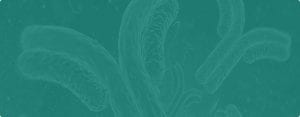Non-Specific Bands on your Western Blot
Sometimes when you look at your blot everything looks pretty much good. A nice strong band where you’re expecting it, suggesting all has gone well.
Then you look a little closer.
Hmm. What’re those below/above it? Are those…extra bands?
Yup, could be. Sometimes non-specific bands can pop up on your blot. It’s not always a procedural issue. Sometimes it could be dependent on what you’re doing.
For example, if you’re running a samples pre and post-induction of a protein, depending on your cells and protein, you might see bands related to basel expression of a protein. If you were using this as a negative control, then this is a problem you’ll need to investigate further.
However, sometimes it could be a procedural issue leading to non-specific binding, and you’ll need to repeat. So to help you get to the bottom of it here are some of our hints and tips.
A number of the same problems may be occurring as with if you were seeing multiple bands.
Once again, we always recommend it’s best to start with fresh reagents and buffers where possible if you need to repeat anything, just to ensure there’s no contamination and that everything has been prepared correctly. Nine out of ten times this is enough to fix most problems.
And so, on to the guide…
High passaged cell lines
High passage number cells can accumulate differences in their expression profiles, so try to use less-frequently or non-passaged cells.
Polyclonal antibodies
Polyclonal antibodies are, by their nature, somewhat more promiscuous in what they bind than monoclonal antibodies. Sometimes this is useful, but sometimes this can lead to inappropriate binding. At the least, if repeating be sure to use a fresh aliquot.
Shifting to a monoclonal antibody against your target protein should help to resolve this.
Primary antibody concentration too high
Try decreasing the concentration of your primary antibody: it may be that the high concentration is causing non-specific binding.
Dimers, trimers, multimers
…
mers everywhere…
If possible, check the literature to see if your protein forms multimers of any nature. Being the same protein glommed together, they are likely to have the same epitopes exposed for your detection antibody to bind. If you are seeing bands at roughly double, triple or half what you were expecting, then boiling in Laemmi buffer for 5-10 minutes could disrupt them and clean up multiple bands
Subtypes
Some proteins may have a variety of different molecular weight sub-types or splice-variants. If so, they may similar epitopes leading to the appearance of an extra band. Again, a check of the literature should help resolve this and determine if the molecular weights you’re seeing match up.
Protein degraded
It may be your protein has been nibbled away to some degree by proteases, giving a lower MW band. To resolve this, you’ll have to prepare your sample again and be sure to add, or use sufficient, protease inhibitors.
Too much protein
Too much protein in a lane can cause ‘ghostbands’ to appear. Double check the protein concentration of your sample. For membrane, nuclear and cell lysates aim for about 20-30 µg/well. For purified proteins, 10-100 ng should be about right.
Blocking
Try boosting the concentration of your blocking reagent, e.g. from 2-5% BSA, increasing blocking incubation times, preparing the primary antibody in the blocking buffer, and/or adding Tween-20 (0.05%) to your blocking buffer (if not already in)
Washing
If your blots not well-washed, then ‘junk’ can be left over that interferes with the detection antibody(s).
Try:
- Ensure enough washing buffer is used to cover the blot
- Wash with gentle agitation
- Increase the number of washes. For example, wash 4-5 times for 5-minutes.
- Increase the amount of Tween-20 to 0.1%, if it is not already.
Additionally, SDS may cause non-specific antibody binding, so be sure to wash blots after transfer, and ensure no SDS is used in the detection procedures.
We hope this series of trouble shooting hints and tips for Western Blots has been useful, and keep coming back to the blog for more useful information across a range of techniques.
Download PDF :  Filed Under : Uncategorised
Tagged With : Western Blot
Filed Under : Uncategorised
Tagged With : Western Blot

 Filed Under : Uncategorised
Filed Under : Uncategorised


